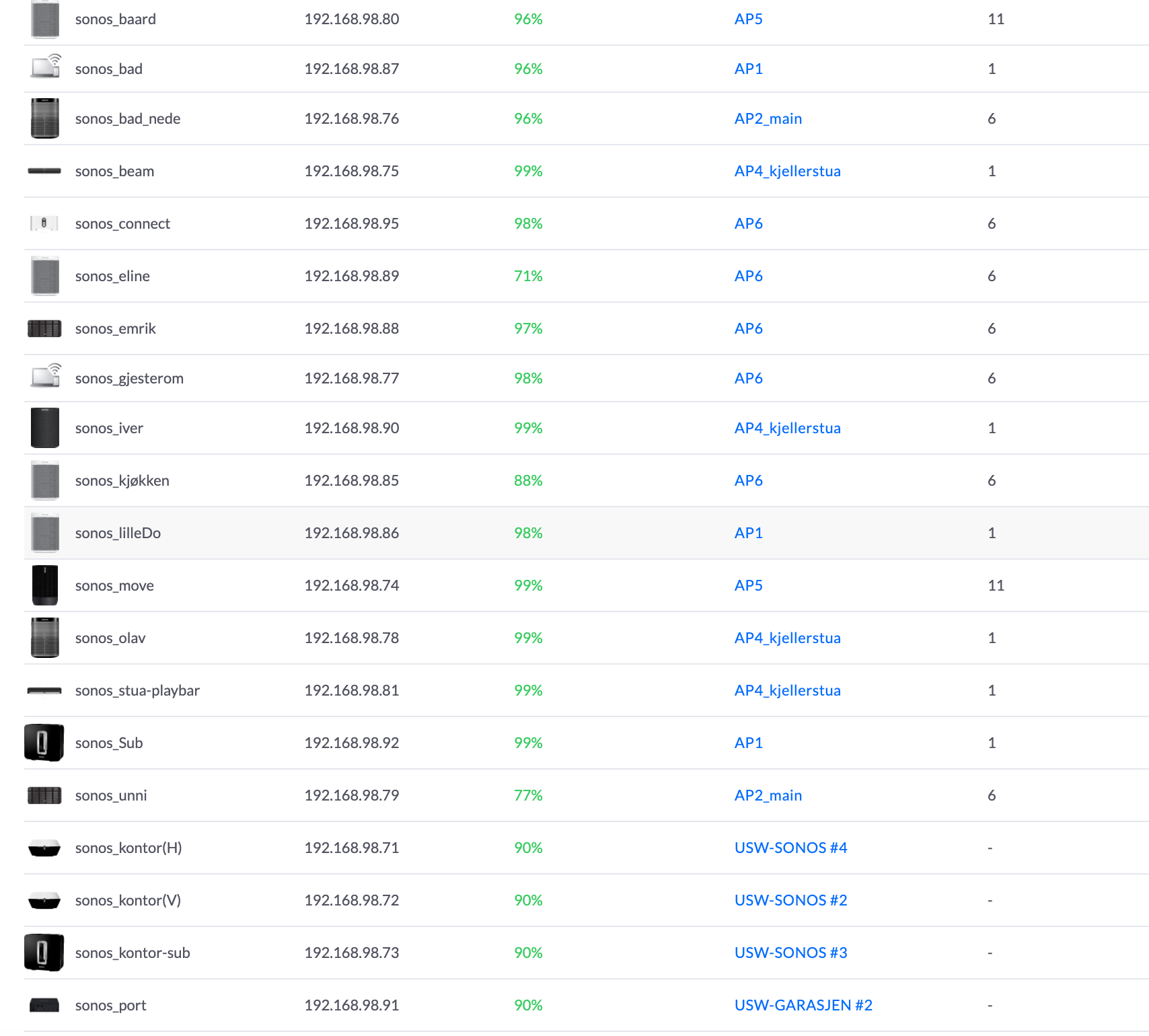UPDATE: I have just realized there is an “advanced setup” section of the forums. But I don’t know how to move my existing question. If a moderator can move it, please do!
I’ve had a Sonos system for a while (all Play3s) always with one wired to my home network. Times have changed, my home network has grown more complex and now I’m in the situation where I have several APs all using the same SSID but on different channels. This is a common practice to increase coverage, but the end result is on 2.4Ghz, the APs are already broadcasting on either 1,6, or 11. Letting Sonos use SonosNet, just ends up causing interference both to my wifi network and to Sonos. I use my wifi network for a lot more things, so I’m not very tolerant of interference from Sonos here.
I’m comfortable with the reliability of the wifi network, so I decided to try moving Sonos to my wifi network. A few things surprised me, so I thought I would ask here:
- I’ve got at least one spot it would be easy to use a wired connection with a Sonos player, but it looks like if any Sonos devices are wired, then the whole system uses SonosNet? It seems like it would be better to let all devices be on wifi or wired, as long as they are all reachable on the same subnet.
- When switching to wireless, I put in the SSID from my Sonos mobile app. I assumed each device would join the AP nearest to it, but it looks like all Sonos device want to join the same wifi channel, which puts a couple of them pretty far from their AP. I verified this by checking: http://X.X.X.X:1400/status/proc/ath_rincon/status for each of the devices. In my case this is channel 6. Two of them are sitting very near APs using channels 1, and 11, but they’re staying fixated on the farthest AP, which uses ch6. Is this right?
What I’m looking for is some advice for Sonos co-existing nicely with a multi-AP network that already uses Ch1, 6, 11.



